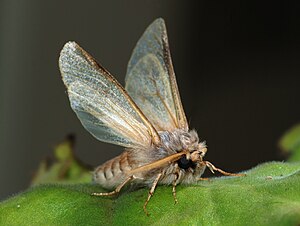The Grapevine Moth
An insect native to southern Italy, the grapevine moth is wreaking havoc across many grape orchards and fruit farms in North America. Deemed a serious agricultural threat, this fast-moving moth can be a pain to deal with, especially during the warm spring and summer months. The damage it causes can attract other insects to your garden, such as ants, fruit flies, and other moths. This can cause a never-ending buildup of insects that takes ever longer to manage.
How the Grapevine Moth Does Its Dirty Work
The grapevine moth finds host plants, usually grapes and small berry fruits, and uses them as places to lay their eggs. First-generation larvae emerge and feed on the clustering flowers of the plants, causing wilt and damage. The second-generation larvae then feed on the green berries, extracting nutrients and working their way from the outside to the inside. Most larvae will hollow out the berries, leaving the skin and the seeds. The rotting, deteriorating fruits attract fruit flies and ants, causing an increase in the number of insects in the affected area. Additionally, such plants are susceptible to infections such as aspergillus, alternaria, rhizopus, cladosporium, and penicillium.
Grapevine moths prefer warm weather, and thrive in areas that are slightly moist and have plenty of natural sunlight. Egg hatching, larvae development, and adult life are very rapid stages within the grapevine moth life cycle, making the moths difficult to control if not spotted early.
Management
Although some countries generally focus on the second generation as a target when managing grapevine moths, most states in the US seem to go after both generations. The second generation is least likely to respond to insecticide use, but this doesn’t mean fighting them is impossible. Some reduced-risk insecticides can be used near grapes to combat and control grapevine moths and are often employed by various pest control services.
Along with certain insecticides and pesticides, mating disruption has also been used as a successful treatment against the reproduction of grapevine moths, especially when their populations are low in number. Inviting predatory insects, particularly parasitic wasps, into the garden can also be a viable method to control grapevine moths.



